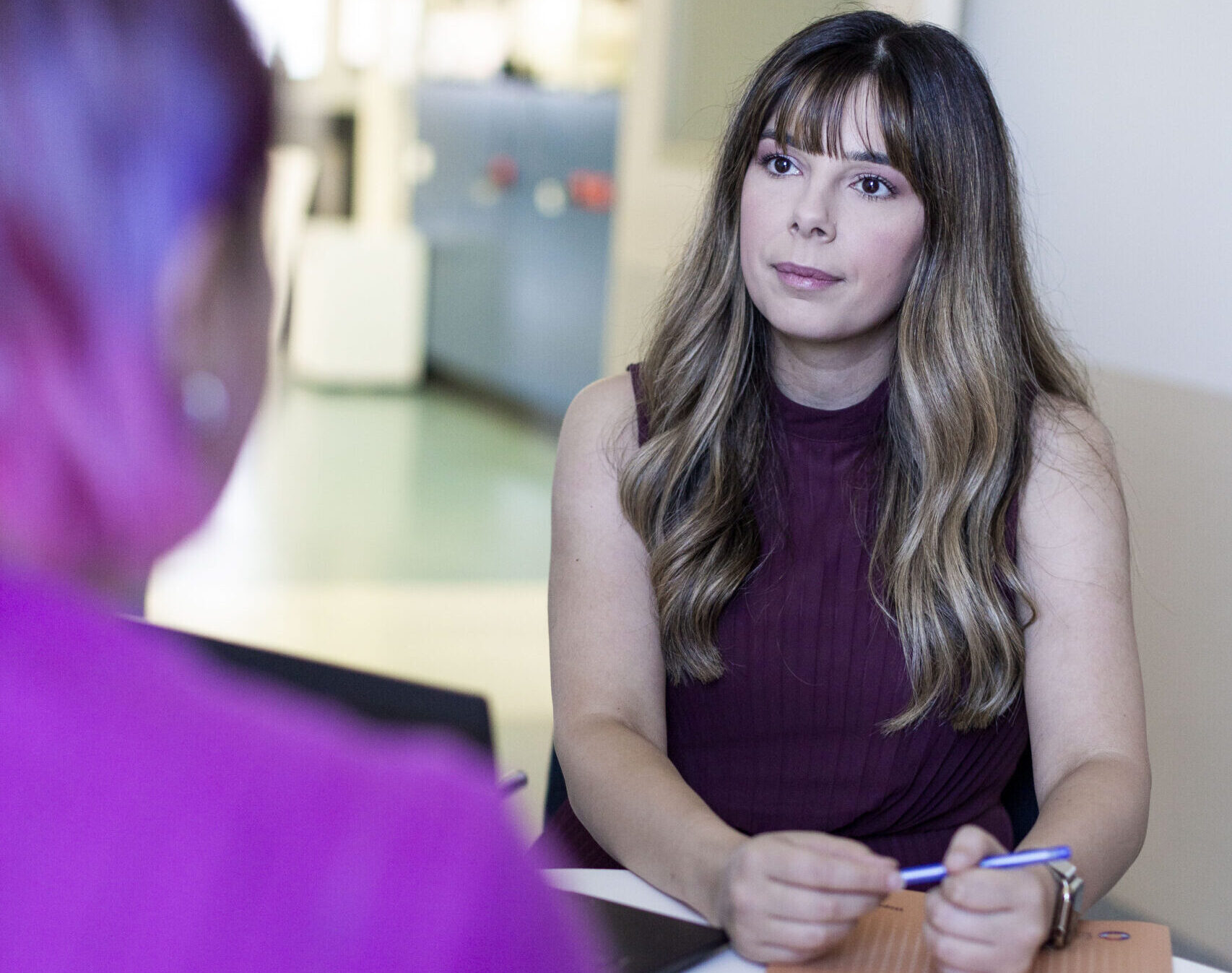This website uses cookies so that we can provide you with the best user experience possible. Cookie information is stored in your browser and performs functions such as recognising you when you return to our website and helping our team to understand which sections of the website you find most interesting and useful.
Annual Review 2023
Understanding inherited retinal diseases
New research is revealing more about female carriers of inherited retinal disease. And its findings are challenging the long-held idea they don’t experience vision symptoms as severely as males do.
Karen Woolsey has been a passionate early childhood teacher for 30 years, but her deteriorating vision forced her to consider a change in career.
“At the start of 2023, I decided that I wouldn’t be able to continue teaching,” she says.
“I could still teach in the classroom, but I wasn’t able to supervise the kids outside in the playground anymore.”
Karen has X-linked retinitis pigmentosa (RP), a genetic condition that results in poor night vision and the gradual loss of peripheral vision.
Like other genetic conditions, the genes that cause it are passed on from parents to their children, and Karen is not the only person in her family affected.
“My grandmother would have had RP, although back in the day she didn’t talk about it,” she says.
“My mum was obviously a carrier, but she didn’t know that.
“And my brother, Glenn, who is two years younger than me, exhibited symptoms earlier. We did a lot of camping growing up, and he would struggle to see at night.”
That was what prompted her parents to take Glenn to have his vision examined, which led to the diagnosis of an inherited retinal disease (IRD) that other family members could potentially have.
Karen was eventually diagnosed with retinitis pigmentosa herself in her early 30s.
“One of my goals in life is to travel around Australia and see the beautiful countryside, so there was a moment I thought I was never going to see the waterfalls – the news came as a shock.”
X-linked
X-linked retinitis pigmentosa is an IRD linked to genes in the X-chromosome and was once thought to not severely affect female carriers.
For males, who have one X-chromosome and one Y-chromosome, the genetic fault in the X-chromosome has significant impact.
For females, with two X-chromosomes, one healthy chromosome was thought to make up for the faulty one.
Sena Gocuk, Clinical Research Coordinator at CERA and PhD student at the University of Melbourne, says this is not always the case.
“Female carriers actually present with a spectrum of retinal disease – some have significant vision loss or even legal blindness, while in others the condition is so mild, they may not ever realise they have it,” she says.
She has completed a world-first survey, published in Clinical Genetics, examining the opinions and perspectives of people who live with the disease.
“Until now, inherited retinal disease carriers haven’t been tested for their knowledge, opinions, emotions or experiences about being told they have the condition,” says Gocuk.
“This is the first study looking at carriers of X-linked IRDs, and the first comparing different regions from a global perspective.”
She found that while most respondents agreed their eyecare provider and general practitioner helped them understand their condition, few carriers reported receiving psychological counselling (nine per cent) or family planning advice (five per cent).
Most respondents (78 per cent) also agreed that gene therapy should be available to carriers.
“While not every carrier will be eligible for treatment, this research shows many would certainly consider being involved and might benefit from future therapies,” says Gocuk.

New direction
Karen has a positive outlook and draws inspiration from her brother.
“Glenn is a lot more restricted with severe symptoms, but he’s never had a chip on his shoulder and is a positive person with a can-do attitude,” she says.
“After an initial shock, I thought, ‘let’s just make the best of it’.”
Karen has also just begun a new step in her career as an early childhood specialist teacher with Vision Australia.
“I feel extremely privileged and blessed to be able to continue working with families and children who are blind and visually impaired, and also support myself as a visually impaired person,” she says.
Karen is also grateful that research is being done into conditions like hers.
“I’m thankful that somebody is focusing their research on females, knowing how severely it has affected me,” she says.
“The actual experience of research has been positive – everyone is very open about what the research involves.
“Although people are empathetic, only you know what you’re going through yourself.
“Working with someone like Sena, who is passionate about her work, it feels like we’re on a team working together towards a goal.
“It’s a privilege that we can have this relationship together.”
This story was originally published in People in focus: Annual Review 2023.

